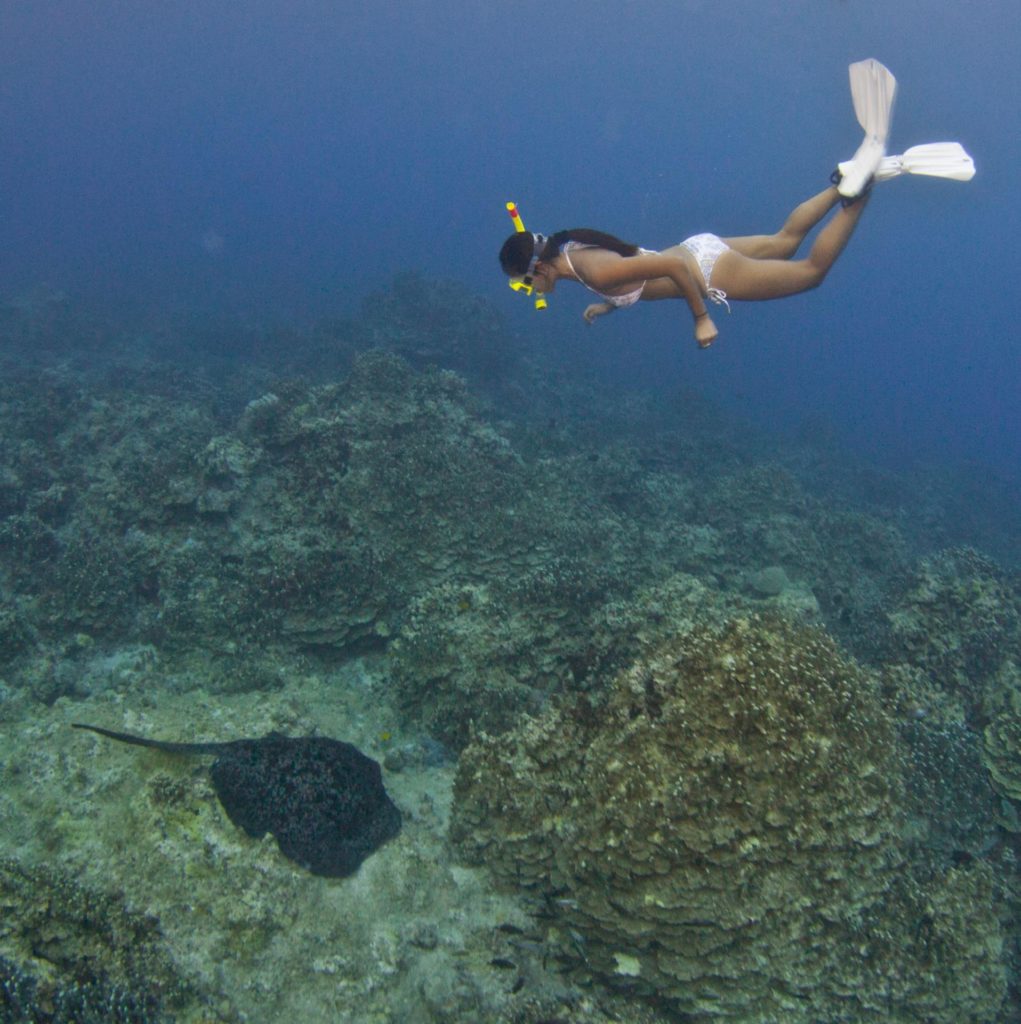
The welcome creation of new marine preserves in Guam look to provide a safe haven for large fish to breed, a boost to the decreasing fish populations and boom for divers exploring the island’s fringing reefs.
Surrounded by an azure sea, the island of Guam, in western Micronesia, is blessed with one of the world’s richest coral reef marine environments. Rising from the western Pacific Ocean out of the world’s deepest valley, the Marianas Trench, clear, blue water brings pelagic life to its shores.
The fringing reefs that have grown over the centuries hold more than 900 fish species and nearly 400 kinds of corals. This great biodiversity naturally attracts divers from all over Asia and other parts of the world. The island’s historic past includes shipwrecks and remnants from WWI, WWII and even the gold bearing Manila Galleon trading days, making Guam literally a treasure chest for undersea explorers.
Although Guam is the largest island in Micronesia, it doesn’t have the reef mass of its neighbors. Palau holds a 100-mile-long archipelago. Yap has a vast surrounding inner mangrove-lined lagoon. Guam has a barrier reef and Cocos Island in the south.
Volcanic in the south and limestone forest in the north, the island’s topography has steep, dramatic undersea drop-offs and coastal areas pocked with protected bays and coves. Guam is Micronesia’s most developed and populated island that attracts more than 1.2 million Japanese and Asian tourists annually, and the reefs get a lot of pressure from tourism, local sport diving and, of course, island fishermen.

In the past, over-fishing, siltation from poorly planned development and typhoons have all played a part in threatening Guam’s marine life. There has been a sharp decline in large, mature breeding fish over the last 20 years on the island, so protecting Guam’s somewhat fragile marine resources has become a major goal for the biologists and planners at the island’s Division of Aquatic and Wildlife Management.
In recent years, the betterment of Guam’s diverse underwater world has been the thrust behind a series of nature preserves set up around the island. Fishing is kept to a minimum in these areas, allowing breeding stocks to prosper to produce more fish.
Achang & Sasa Preserves
The preserves include the Achang Reef Flat in southern Guam, southeast of Cocos Island. This area is a prime spot for young fish to grow, as there are many mangroves and other natural protections for the juveniles.
Moving up the western coast, the Sasa Bay is another mangrove area in the eastern part of Apra Harbor. This has long been a breeding ground for fish, including hammerhead sharks. These two areas are not recreational spots but are important to providing a place for mature fish to spawn and for young fish to grow in safety. The fish that move out to sea from here not only populate Guam, but also some migrate to outer islands such as the atolls of Yap State.
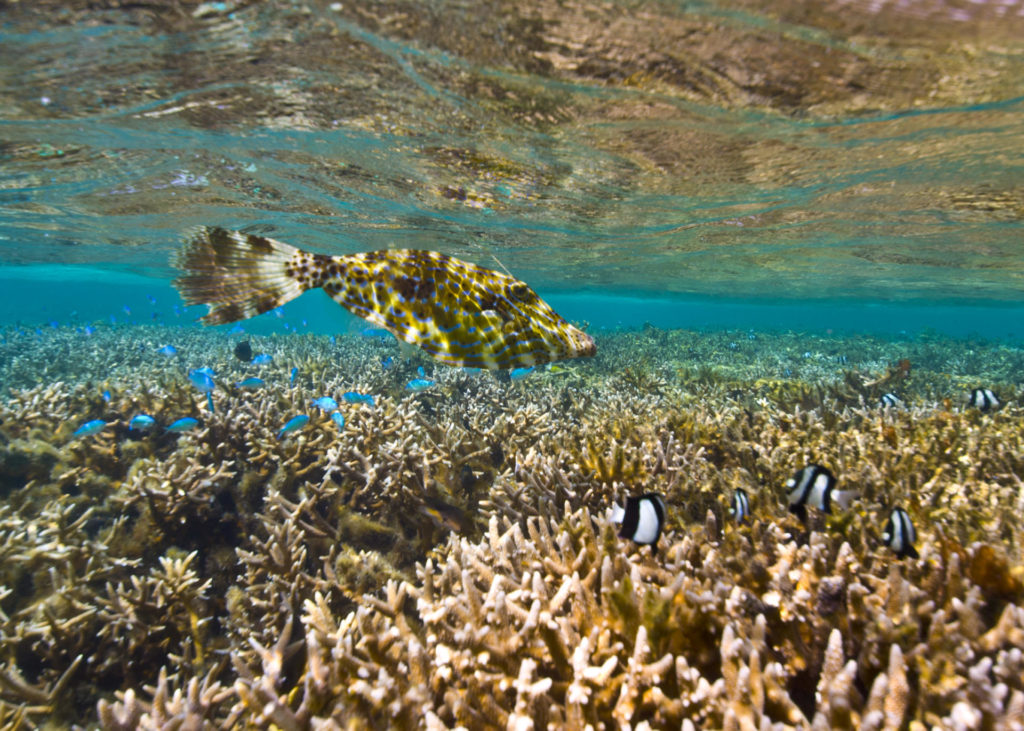
Piti Bay Preserve
The two most popular spots are The Piti Bomb Holes, which actually includes most of Piti Bay including Camel Rock, Fish Eye Marine Park and the Piti Channel, and Tumon Bay. Piti Bay is another prime site for fish with more than 200 species in this compact area inside the reef.
This is one of Guam’s most accessible sites, a favorite of introductory scuba divers and snorkelers. It has sandy sink holes, glorious soft and hard coral growth, much of which is decades old, and lots of fish. The fish include seven butterfly fish species, eagle rays and the occasional sea turtle. Nurse and white-tip sharks can be found over the reef in the outer reef fingers.
Divers and underwater photographers are amazed at how approachable are the fish here. This is one of Guam’s most accessible sites and is a favorite of introductory scuba divers and snorkelers. Snorkeling and SeaWalker tours take place daily, and the Fish Eye Undersea Observatory brings the sea to those who want to see the ocean from the facility’s windows.
Divers can see the healthy reef on the south side of the observatory, feed the fish and even snorkel around the observatory itself. Fish Eye has a snorkel tour that has seven stops and looks at various fish life and corals as well as a sea anemone colony with clownfish. There is a resident pufferfish just under the entry and exit platform at Fish Eye. Afterwards, take a trip inside the observatory or visit the gift shop in the Fish Eye facility across the street.
Tumon Bay Preserve
Perhaps best known is Tumon Bay, including the areas around Gun Beach and Two Lover’s Point. The preserve sits on Guam’s premier beach, lined by hotels, clubs and dining venues. Its blue waters offer all kinds of recreation from competitive paddling and swimming to local cast (talaya net) fishing and snorkeling.
The inner reef at Tumon is like a miniature aquarium, with many colorful tropical reefs. Ocean currents, making the sea full of nutrients and thus a good site for young fish to prosper, constantly flush these protected waters.
North of here, and still within the preserve, Gun Beach is considered a fun boat dive or beach dive. Named for the WWII gun emplacement near the cliff line that sits on its shore, this sloping reef is full of fish life and is great for fish photography.
Sea turtles, marble rays, manta rays and even the rare tiger shark have been seen off the shores. This is a favorite snorkeling site stopover for some dolphin tours, so the fish get fed occasionally. Thus, divers will find willing photo subjects almost the minute they hit the water.
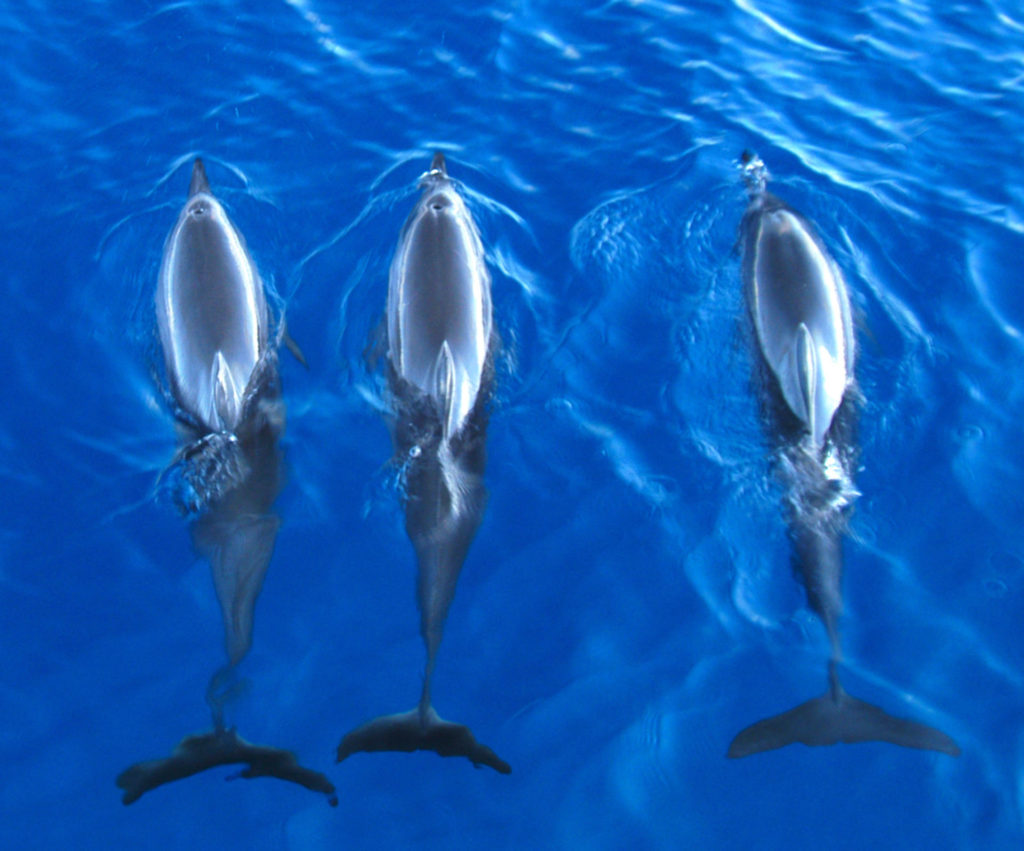
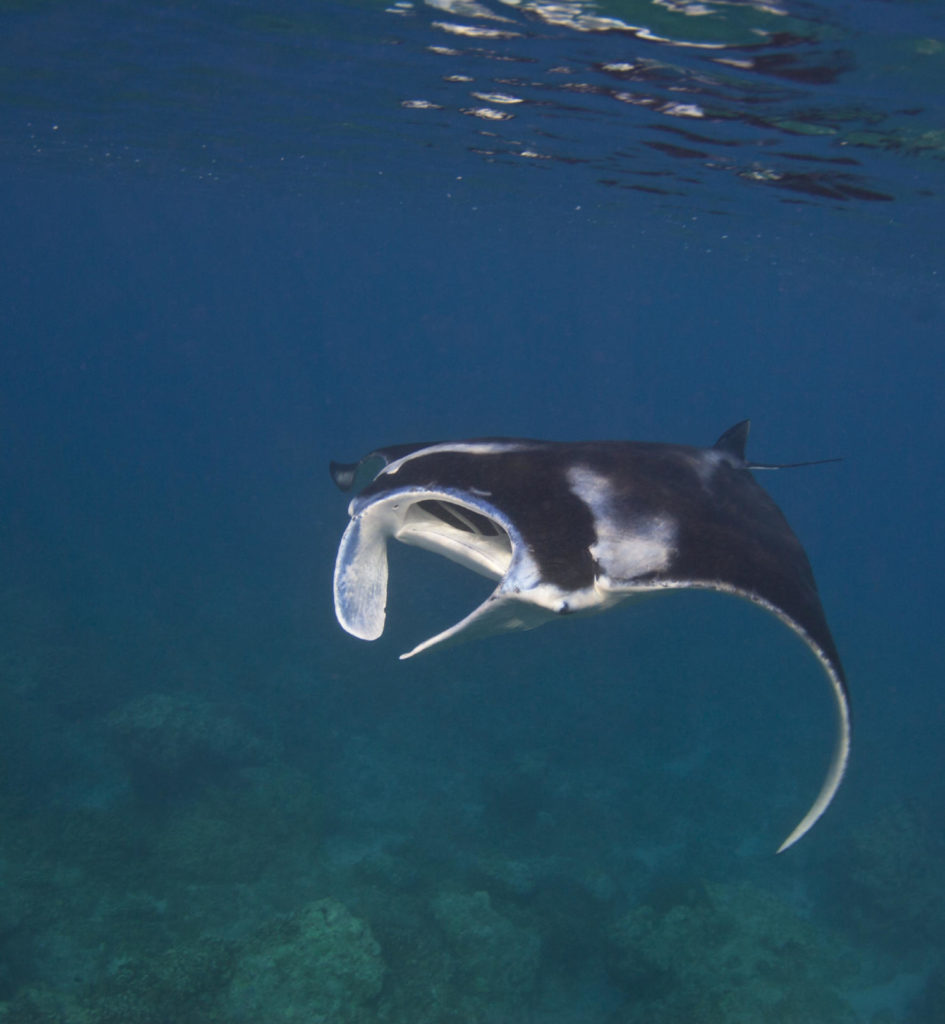
The site’s buoy is near a healthy coral garden of castle corals. The reef slopes down and bottoms out at about 110 feet to a sandy plain. Look for possible garden eels and helmet shells in the depths. One can dive deep or shallow here. Healthy coral gardens are found to the left.
Manta rays have been known to come here to feed on the outgoing tide at the major cut in the reef. Look for tiny creatures such as coral hermit crabs and colorful Christmas tree worms that hide when touched but then unfold into a tree-like formation of appendages.

Pati Point Preserve
The final area is known as Pati Point in northern Guam. This site was set aside a while ago by the military and the results are refreshing. There are schooling fish, sea turtles and lots of other signs that preserves do work at the Pati site. The corals here are also quite healthy, and the view of Guam’s coastline makes this a fine place to visit. Waves and strong currents make it hard to come here on a consistent basis, which is probably good for the fish.
The preserves are trying to reduce fishing pressure. For more than a decade, biologists studied Guam’s reefs and decided the increased population on the island meant more fishermen. Local tastes seem to lean toward the full-grown and juvenile fish, which made it hard for some fish to repopulate reefs once most of them were caught. The preserves have been called egg banks, places where fish can lay and hatch youngsters without predation from man.
Guam’s preserves are new to the island. Far-sighted people in neighboring Palau set aside its 70 Islands Nature Preserve in the late 1950s. Guam’s little series of marine oases are less than 10 years old, with strict enforcement and staffing coming only in the last three to four years. It is already deemed a success, with fish populations noticeably increasing within these special reefs areas.
Overall, the addition of these new preserves up and down the coast means fish from these protected sites should also move into the unprotected regions. This means fishermen will be able to actually show better catches in a short period of time. This also means people such as divers should see more and bigger fish on the reefs. Overall, Guam’s reefs should indeed prosper from these new preservation areas. This creates a win-win situation for all involved in using the Guam waters.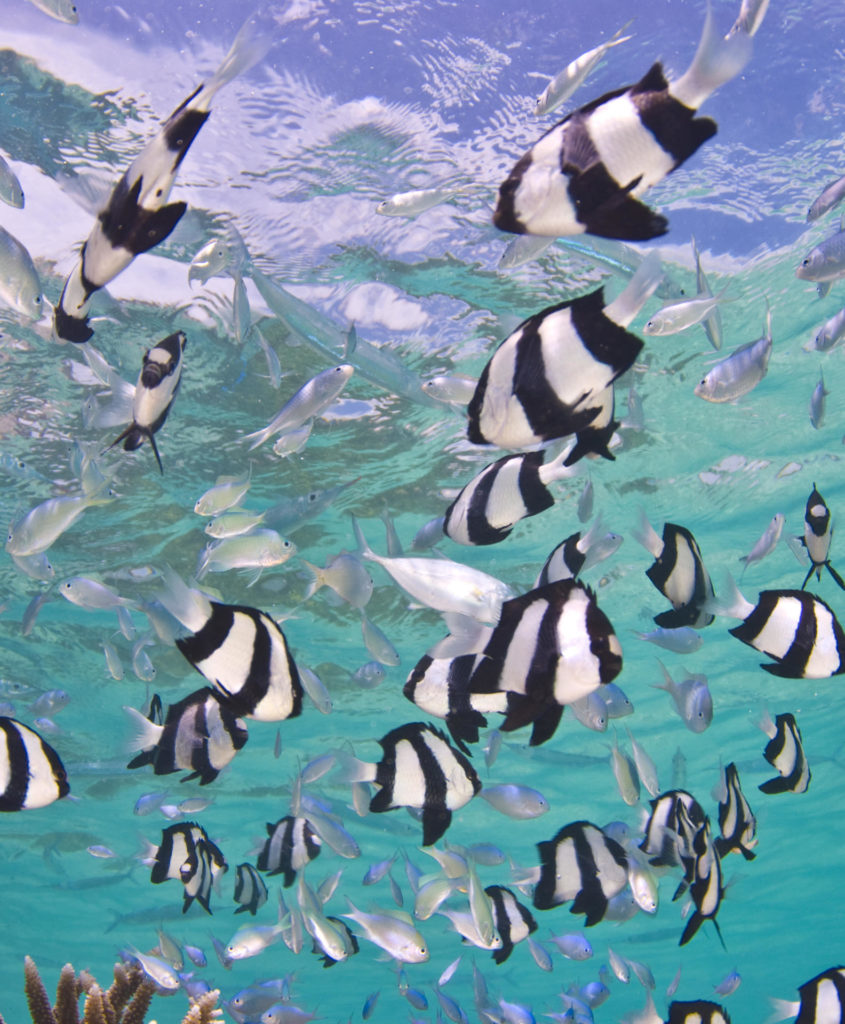
For the diver, these preserves mean Guam’s beautiful reefs should have more and bigger fish in the years to come. As Guam is one of the richest ocean areas on earth, with the preserves, it can only get richer.
Diving Practicalities
There are great deals at the local dive shops where divers can be certified for just about any specialty, perhaps with the exception of ice diving. Year ’round consistently warm and clear water, weekend boat trips and easy walk-in beach dives add to the diving fun.

Guam is also one of the safest dive destinations in the world. It has U.S. Coast Guard and Navy patrolled waters, and dive boats are all certified through the Coast Guard. The boats carry oxygen and safety equipment, and Guam has recompression chambers for treatment of any potential diving accident.
Diving Protection: Guam waters are 82-86 F (28 C) degrees year ‘round with excellent visibility at most locations. A lycra skin will suit most divers. Local divers use 1.5 – 2 mil wetsuits and only the acclimatized use 3 mil. Above water temperatures never get below 74 F (at night) and never get above 90 F. Apra Harbor dives have visibility in the 30-60-ft. (10-20-meter) range, and outer reefs offer 100-150 ft. (33-45 meters) and more.
Instruction: Guam also offers all levels of instruction from beginning open water and one-day resort experience through advanced instructor training. Technical diving is also taught on Guam with deep and deep wreck venues for in-water training on scuba and re-breather.
When to Dive: May through October are the calm months. Trade winds normally start in November or early December and run through April. Guam has so many places to dive, there is usually some protected place all year.
Photography: Underwater photography can be rewarding. Film processing and digital printing is available. Guam also has a professional camera center that carries many top camera brands in a good range.
Protection: The sun reflecting off the water can burn, even on a covered boat. Bring protective clothing such as a long-sleeve T-shirt and brimmed hat. Suntan lotion is a necessity as well.
Good to know: For walk-in dives, booties with a hard sole are needed. Foot fins are fine for boat dives. Some local dive shops offer boat rentals for groups. One can dive, have a sunset barbecue and even kayak and snorkel for an afternoon of fun on the water.




